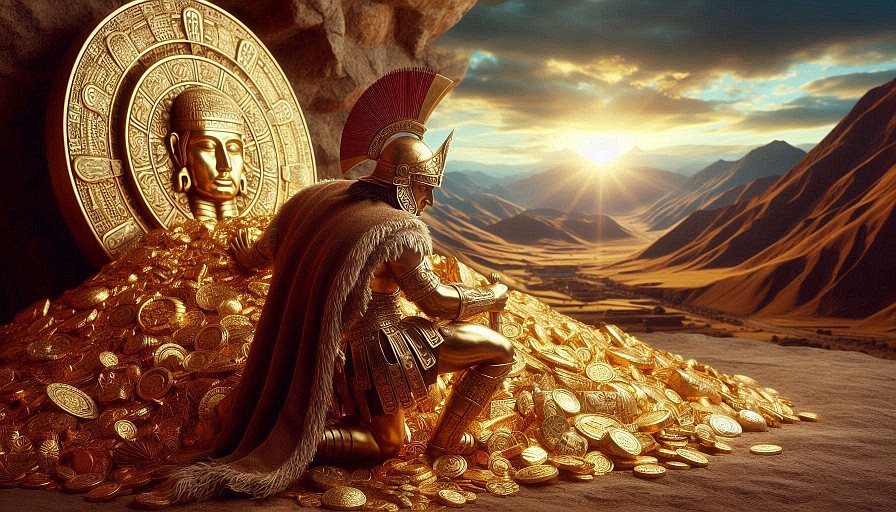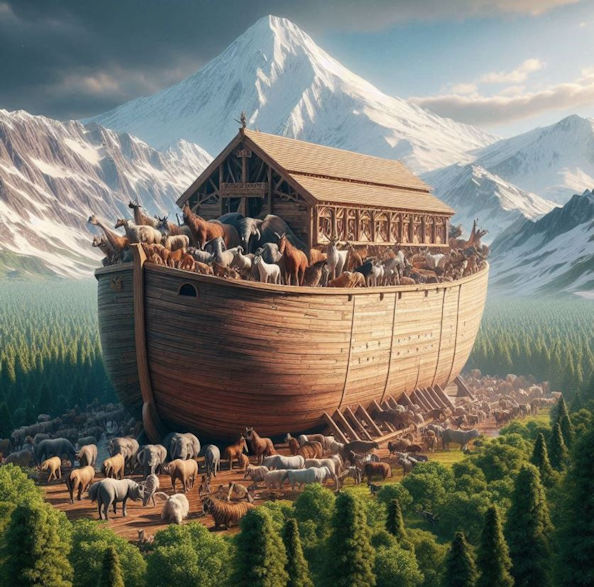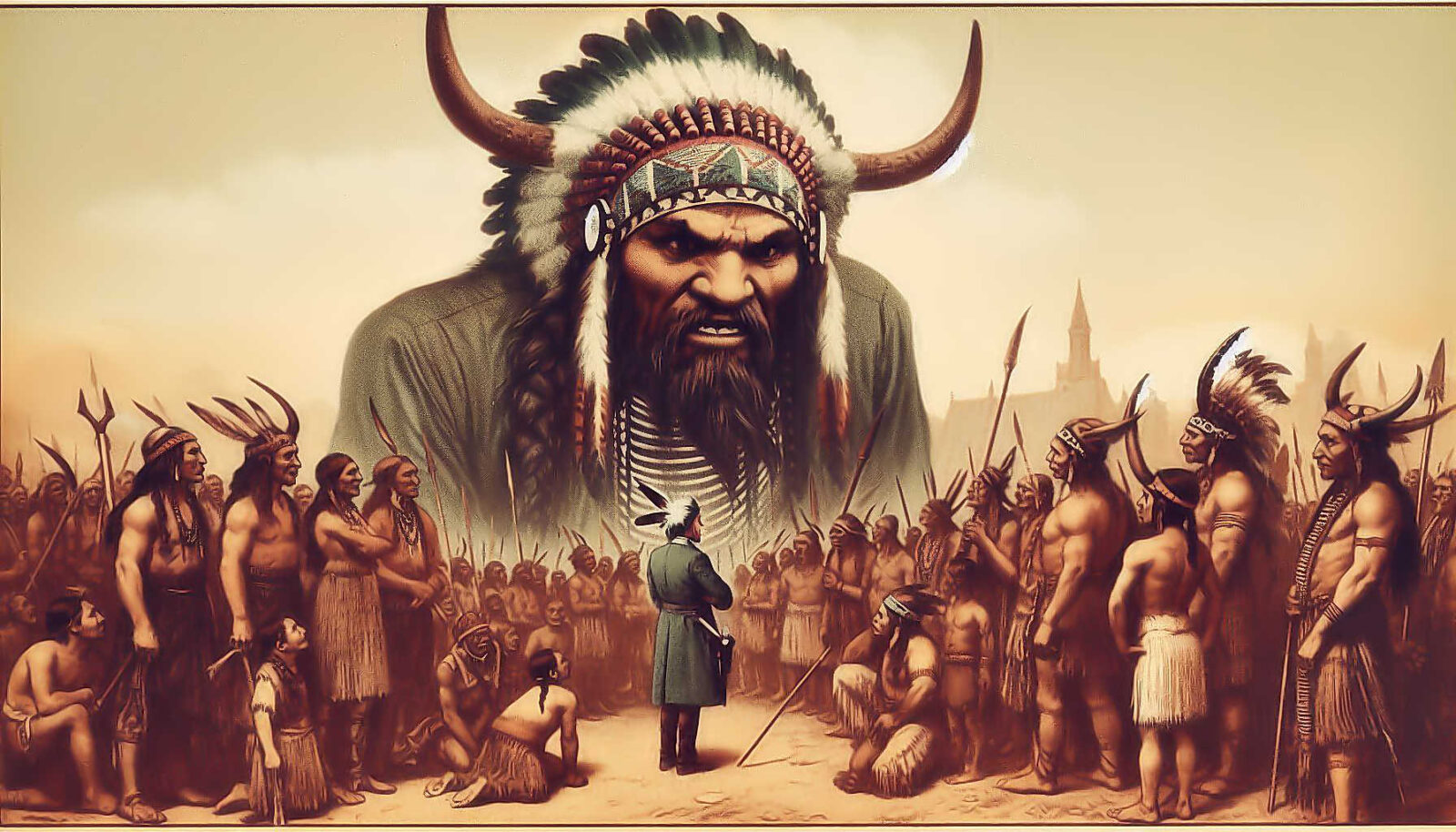
Throughout history, there have been various tales and legends surrounding giants in different cultures around the world, including among Native American tribes. However, these stories are typically rooted in folklore and mythology rather than factual accounts.
The Giants of Patagonia: Legends and Reality-Patagonia, the southern region of South America spanning parts of Argentina and Chile, has long been shrouded in mystery and folklore, with tales of giants weaving through its rugged landscapes. These giants are not the mythical beings of fairy tales, but rather representations of the indigenous peoples who once roamed this vast and desolate terrain.
The legend of the giants of Patagonia can be traced back to the early European explorers who ventured into the region during the 16th century. These explorers, such as Ferdinand Magellan and Sir Francis Drake, reported encounters with indigenous tribes known for their remarkable stature. Standing significantly taller than the average European of the time, these tribesmen appeared as giants in the eyes of the early explorers, sparking tales of mythical beings inhabiting the southern reaches of the continent.
Among the indigenous peoples of Patagonia, the Tehuelche tribe stood out for their impressive physical stature. The Tehuelche, also known as the Patagones, were hunter-gatherers who lived nomadically across the windswept plains of Patagonia. Described as tall and robust, with an average height exceeding six feet, the Tehuelche were well-adapted to the harsh conditions of their environment.
The Tehuelche’s towering presence left a lasting impression on European explorers, who often embellished their encounters with tales of encountering giants. However, as subsequent expeditions and interactions with indigenous peoples revealed, the giants of Patagonia were not mythical creatures but rather a testament to the diversity of human populations inhabiting the Americas.
In reality, the Tehuelche and other indigenous tribes of Patagonia were resilient cultures with rich traditions and a deep connection to the land. They relied on hunting guanacos (a type of camelid), gathering wild plants, and navigating the vast expanses of the Patagonian steppe. Their lifestyle, characterized by mobility and adaptability, allowed them to thrive in one of the most inhospitable regions of the world.
Despite the romanticized accounts of giants roaming the plains of Patagonia, the reality of indigenous life in the region was far more complex. Like many indigenous peoples around the world, the Tehuelche faced displacement, violence, and cultural assimilation with the arrival of European colonizers. The colonial expansion into Patagonia brought profound changes to the region, disrupting traditional ways of life and marginalizing indigenous communities.
Today, the legacy of the guargantuans of Patagonia lives on in the stories and folklore of the region. Their towering presence continues to capture the imagination of travelers and adventurers drawn to the rugged beauty of Patagonia’s landscapes. Yet, beyond the myths and legends, the true giants of Patagonia are the indigenous peoples who have endured centuries of adversity and continue to preserve their cultural heritage in the face of ongoing challenges.
In exploring the legends of the very tall people of Patagonia, we are reminded of the enduring power of storytelling to shape our perceptions of the world and the peoples who inhabit it. Beyond the realm of myth and fantasy, the huge individuals of Patagonia stand as a symbol of resilience, strength, and the enduring spirit of indigenous cultures in the face of adversity.
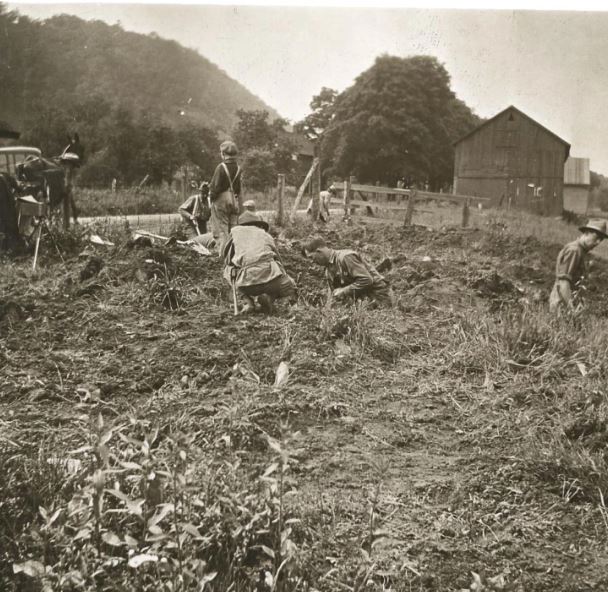
The Horned Giants of Susquehanna County, Pennsylvania, are a fascinating aspect of local folklore that has intrigued residents and visitors alike for generations. The legends surrounding these mysterious beings have captured the imagination of many, weaving tales of ancient creatures that once roamed the rugged landscapes of this rural region.
According to local lore, the Horned Giants were said to be towering humanoid figures, much larger than ordinary humans, with horns protruding from their heads. Descriptions of these giants vary, with some accounts depicting them as peaceful guardians of the land, while others portray them as fearsome and otherworldly beings.
The origins of the Horned Lofty Ones legend are shrouded in mystery, with no concrete evidence to support their existence. However, like many legends, it is likely rooted in a combination of historical events, cultural influences, and the human imagination.
One theory suggests that the legend of the Horned Giants may have been inspired by encounters with Native American tribes who once inhabited the area. Some indigenous cultures have stories of mythical beings with supernatural powers, and it is possible that these tales were adopted and adapted by early European settlers in the region.
Another possibility is that the legend emerged as a way to explain unusual geological formations or archaeological discoveries. The rugged terrain of Susquehanna County is rich in natural wonders, including caves, rock formations, and fossil beds, which could have fueled the imaginations of those seeking to explain the mysteries of the land. There is an old tale that the idea of these very tall Native American Indians having “horns” came from finding their bodies; skeletons in a mass grave that were inter wined with deer antlers over their heads. A fun loving workman exclaimed to others nearby about the horns in the head phenomena, which was acknowledged by more men present, and then the reporters there circulated the claim in their story newspapers on the archeological discovery.
Regardless of its origins, the legend of the Horned Guargantuans continues to captivate the imagination of people in Susquehanna County and beyond. Today, visitors to the area can explore various sites associated with the legend, including ancient rock formations, historical landmarks, and museums that showcase the rich cultural heritage of the region.
While the Horned Huge People may exist only in the realm of myth and legend, their legacy lives on in the stories passed down through generations, reminding us of the enduring power of folklore to connect us to the past and inspire wonder and curiosity in the world around us.
The idea of the Giants of Susquehanna, Pennsylvania, and their accompanying horns is a part of a fictional story created by a group of artists called “The York Fraktur Artists.” The Giants of Susquehanna are mythical creatures that have captured the imagination of people in the region and beyond.
The story behind the Giants of Susquehanna involves a legend about two giants, named Skädo and Odiyo, who were said to have roamed the Susquehanna River Valley in ancient times. According to the legend, these giants were protectors of the land and its people, but they also possessed great power.
As for the origins of their horns, the story goes that the horns were gifted to them by the ancient spirits of the land. These horns were not just ordinary horns; they were said to possess magical properties that endowed the giants with strength, wisdom, and the ability to communicate with the natural world around them.
The York Fraktur Artists, inspired by local folklore and history, conceptualized the Giants of Susquehanna as a way to celebrate the rich cultural heritage of the region. They created sculptures and artwork depicting the giants and their horns, which have become iconic symbols in the area.
While the Giants of Susquehanna and their horns are fictional creations, they serve as a reminder of the power of storytelling and the importance of preserving and celebrating local folklore and traditions. The story of the giants continues to capture the imagination of people who visit the Susquehanna River Valley, adding to the rich tapestry of myths and legends that define the region’s cultural identity
The claim of very tall Native American Indian skeletons being found in the Grand Canyon of Arizona is a persistent legend that has circulated in various forms for decades. However, it’s important to note that there is no credible evidence to support these claims, and they are widely regarded as hoaxes or unsubstantiated myths.
The notion of very large skeletons discovered in the Grand Canyon often stems from fringe theories and speculative accounts rather than reputable archaeological findings. Many of these stories originate from dubious sources, such as tabloid newspapers, internet forums, or sensationalized documentaries.
Archaeological research conducted in the Grand Canyon and surrounding areas has indeed uncovered evidence of ancient Native American cultures, including the Ancestral Puebloans (Anasazi), the Cohonina, and the Hohokam, among others. These civilizations left behind impressive cliff dwellings, petroglyphs, pottery, and other artifacts that offer valuable insights into their way of life and cultural practices.

However, there is no credible evidence to suggest the existence of giant human skeletons belonging to Native American populations in the Grand Canyon or elsewhere, and such discoveries often lack archaeological documentation, peer-reviewed research, or scientific validation.
It’s worth noting that stories of giants are not unique to the Grand Canyon or Native American cultures. Throughout history, various civilizations and cultures worldwide have had myths and legends featuring giants. These tales are often rooted in folklore, mythology, or cultural imagination rather than historical fact.
In summary, while the Grand Canyon is undoubtedly a site of great archaeological significance and cultural importance, claims of tremendous size Native American skeletons found within its depths should be approached with skepticism and critical evaluation. As of now, there is no credible evidence to support these claims, and they are widely regarded as part of the realm of myth and speculation rather than established historical fact.
The notion of old photos depicting giant Native American Indian corpses is a topic steeped in myth, sensationalism, and misinformation. While there may exist photographs purporting to show such phenomena, they are often either hoaxes, misinterpretations, or misattributions.
The idea of giant Native American corpses in photographs likely emerged from sensationalized accounts, hoaxes, or misrepresentations of archaeological discoveries. In the past, there have been instances where individuals have manipulated photographs or created elaborate hoaxes to promote sensational stories or personal agendas.
It’s crucial to approach claims of giant Native American corpses in old photos with skepticism and critical thinking. Without verifiable evidence, such claims remain speculative and should not be considered reliable sources of historical information.
Furthermore, the use of imagery depicting deceased individuals, whether real or fabricated, should be approached with sensitivity and respect for cultural and ethical considerations. Native American communities have long faced exploitation and misrepresentation in media and popular culture, and the circulation of sensationalized or disrespectful imagery only perpetuates harmful stereotypes and misunderstandings.
Instead of focusing on unsubstantiated claims of awesome in height Native American corpses, it’s essential to engage with authentic historical sources, archaeological findings, and cultural narratives to gain a deeper understanding of indigenous peoples’ rich and diverse histories. By prioritizing accuracy, respect, and cultural sensitivity, we can foster more meaningful conversations about Native American cultures and their contributions to world history.
The Lovelock Giants, also known as the Lovelock Cave Giants, are part of a controversial and much-debated archaeological discovery in Lovelock, Nevada. Lovelock Cave is situated in the Humboldt Lake bed, approximately 20 miles south of the town of Lovelock, Nevada. The cave gained significant attention in the late 19th and early 20th centuries due to the discovery of unusually large skeletal remains.
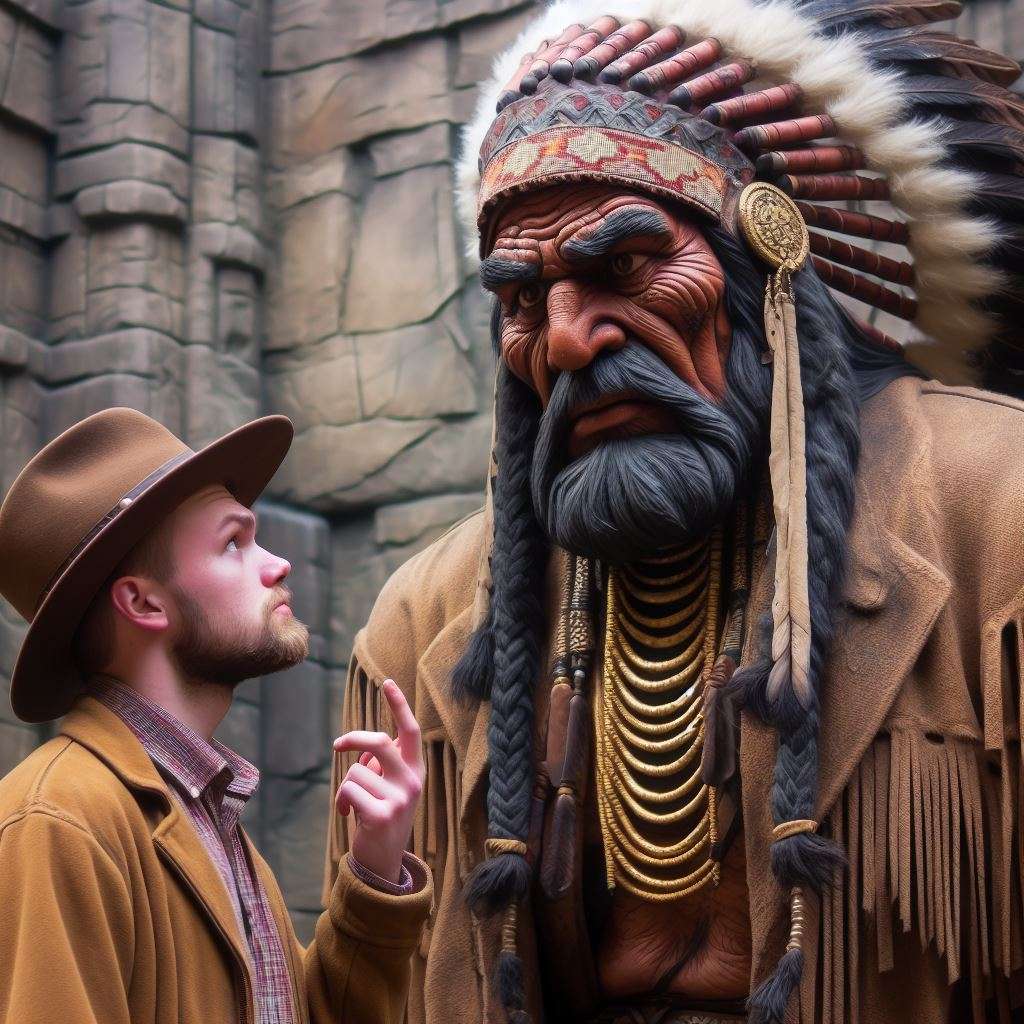
The initial excavation of Lovelock Cave began in 1912, led by guano miners who were looking for bat droppings, which were valuable for fertilizer. However, what they discovered inside the cave astonished them. Among the artifacts and remains found were the skeletal remains of what appeared to be humans of exceptional size, ranging from seven to over ten feet in height according to some accounts. These claims fueled speculation and controversy, with some proponents suggesting that the findings were evidence of a lost race of giants that once inhabited North America.
However, the scientific community has largely dismissed the idea of the Lovelock Giants as evidence of a prehistoric race of oversized humans. Instead, they attribute the large size of the skeletal remains to a phenomenon known as “pathological gigantism,” a condition caused by hormonal imbalances that can result in abnormal growth during childhood and adolescence. Additionally, some argue that the original reports may have been exaggerated or misinterpreted over time.
Despite the skepticism surrounding the interpretation of the Lovelock Giants, the discoveries at Lovelock Cave remain significant for archaeologists and anthropologists studying the prehistoric peoples of North America. The cave has yielded a wealth of artifacts, including baskets, tools, and remnants of food, providing valuable insights into the lifeways and cultural practices of the indigenous peoples who once inhabited the region.
Today, the Lovelock Cave is recognized as an important archaeological site and is listed on the National Register of Historic Places. While the mystery of the Lovelock Giants continues to capture the imagination of some, the scientific consensus remains that they are more likely the result of natural or pathological factors rather than evidence of a lost race of giants.
Sometimes the tall Indian preserved corpses; mummies found by archeologists have red hair. Hair can and in certain cases does turn red long, long after death and burial. The pigment in dark hair nearly always turns red after centuries of burial in certain temperatures and soil chemistry.
The concept and stories of true Native American Indian huge folks is an enduring myth. There are claims of the massive height of these Native American Indians are from 6 feet with others being seven,eight, nine, and in very rare cases up to ten feet. But, there are archeologists and anthropologists who say these big people were no more than about 6 feet 4 inches tall to six feet and one half foot tall. Exaggerated heights could have occurred from Europeans that simply guessed at the heights of these people without actually measuring their real sizes. Also, the use of the word “giants” takes on an entertaining mystique when describing these towering Native American Indians.
